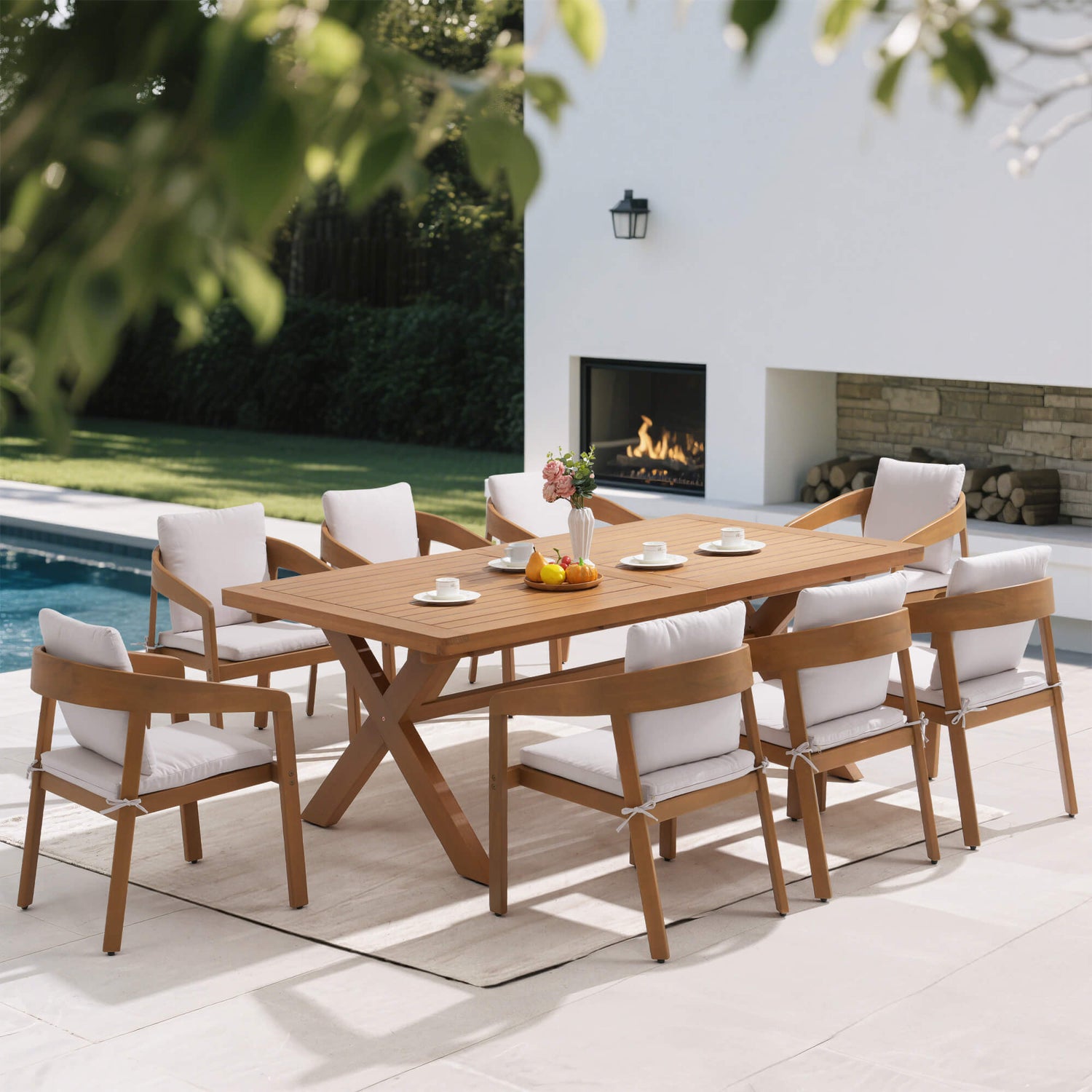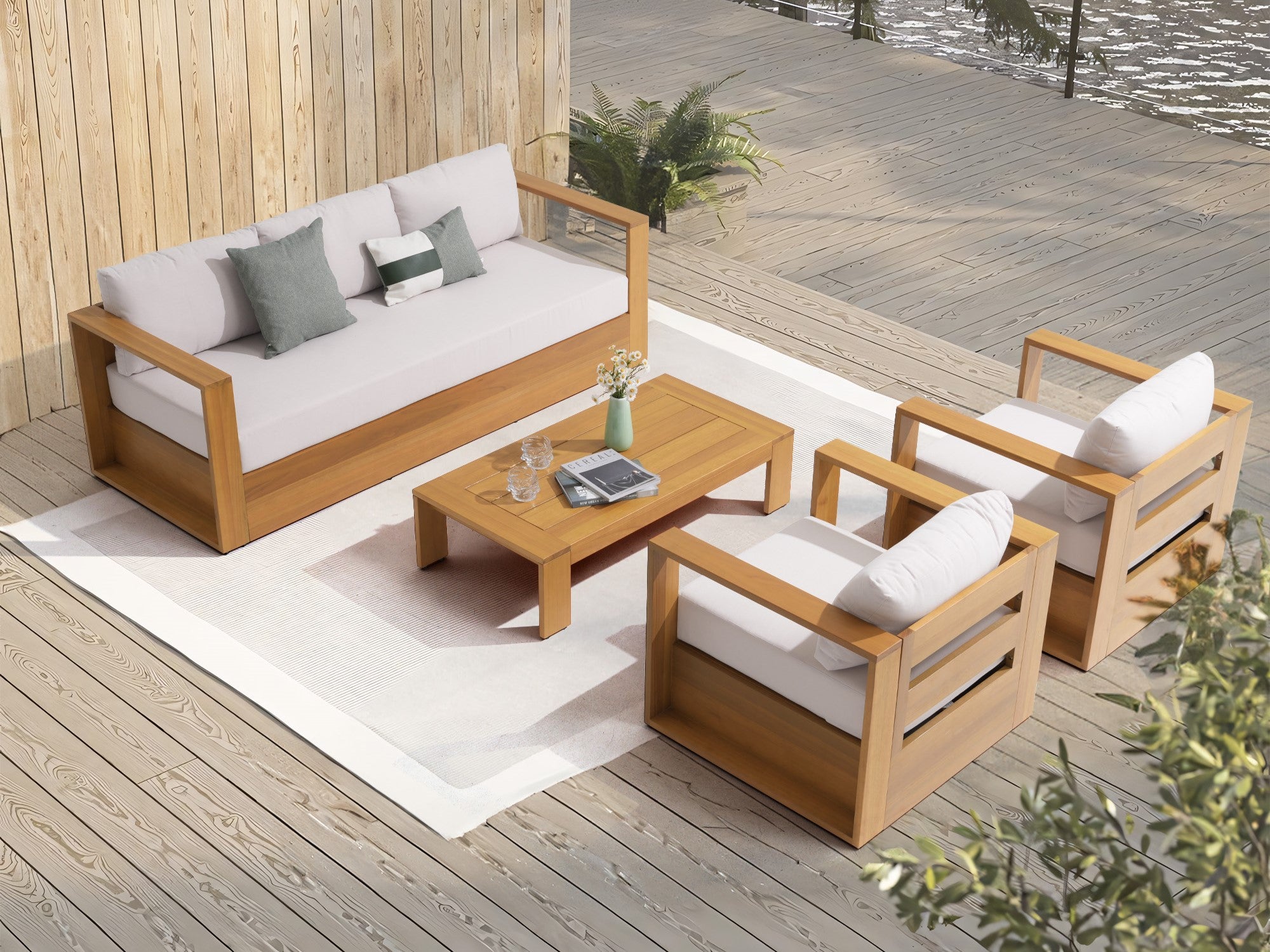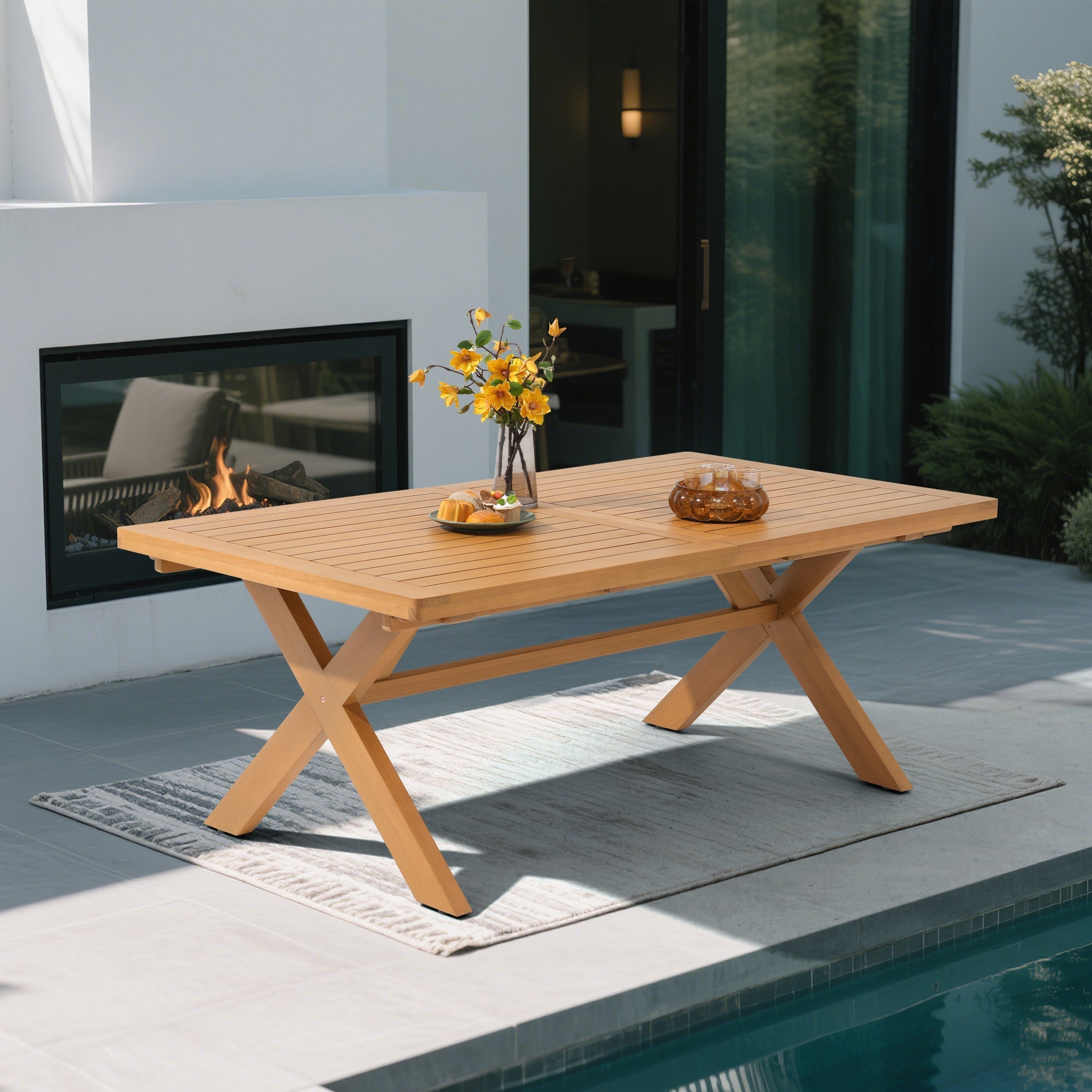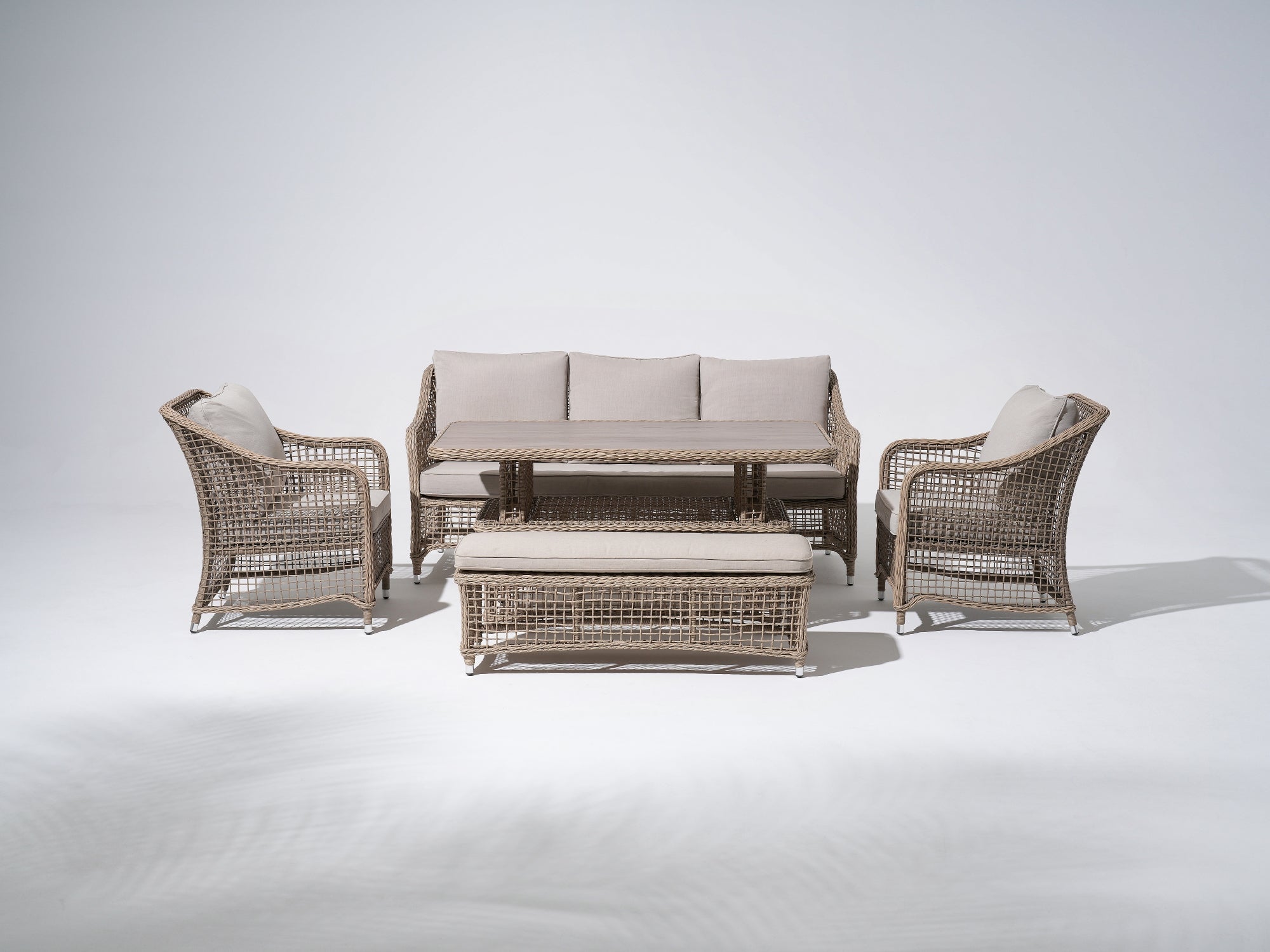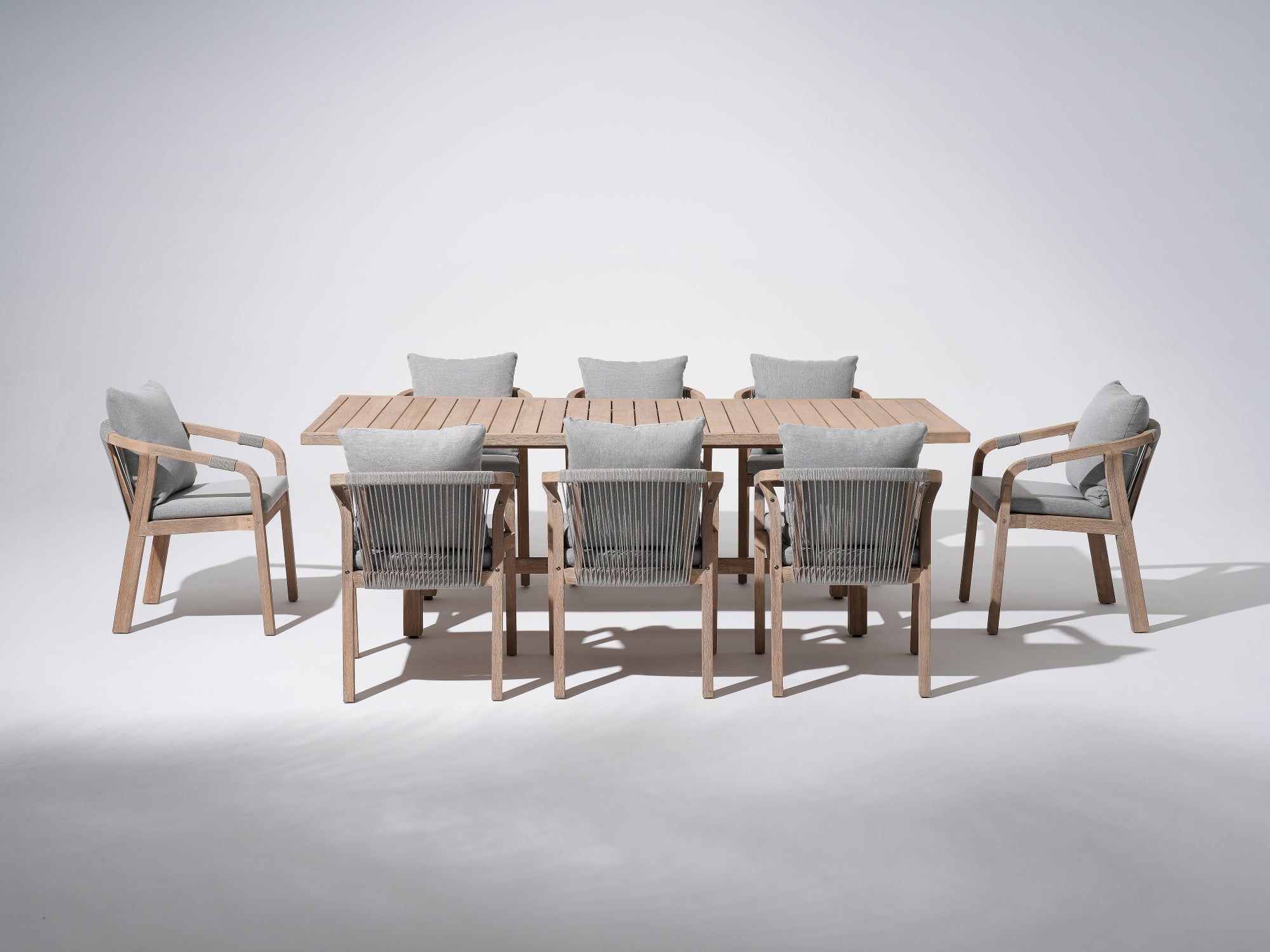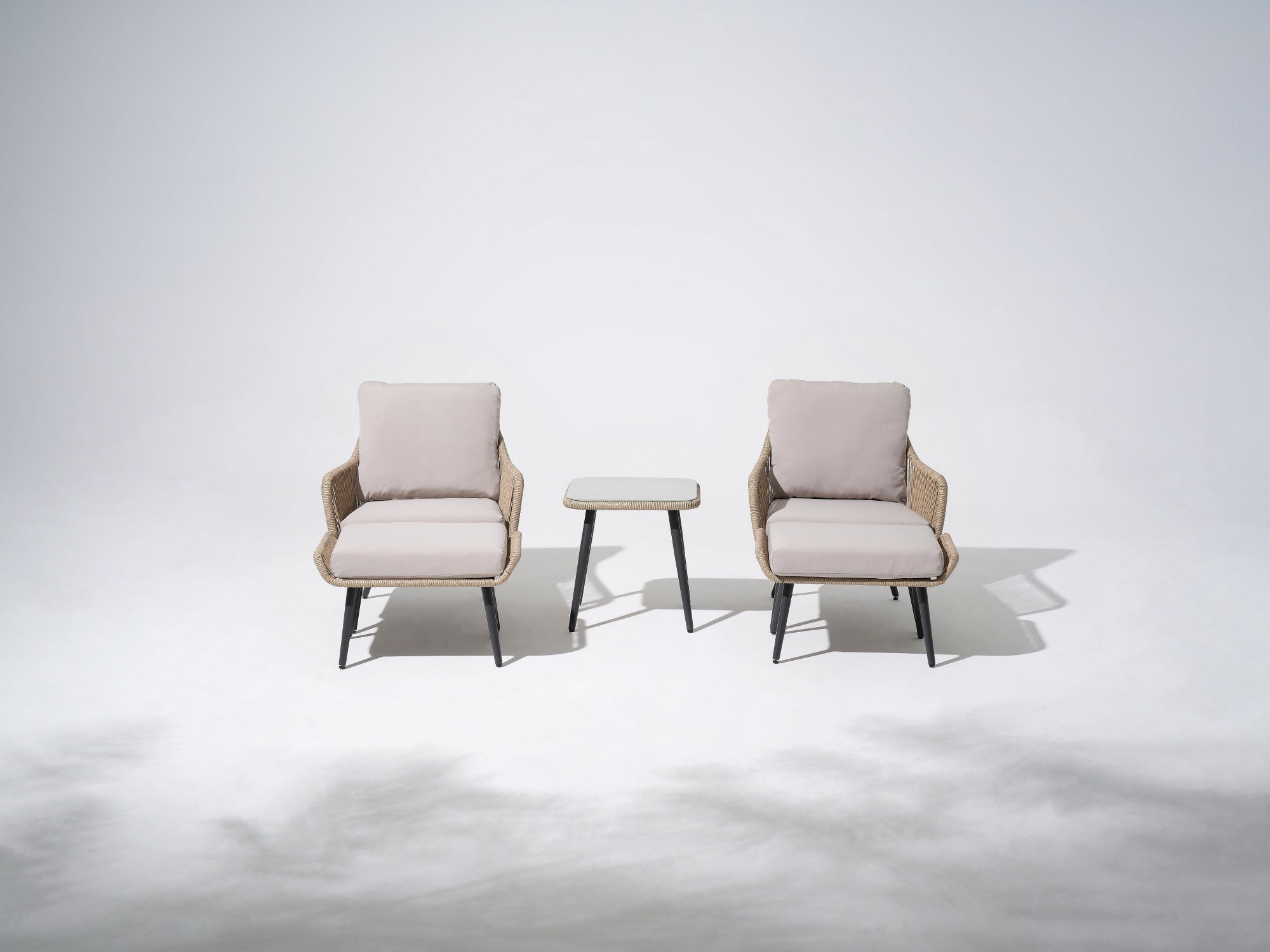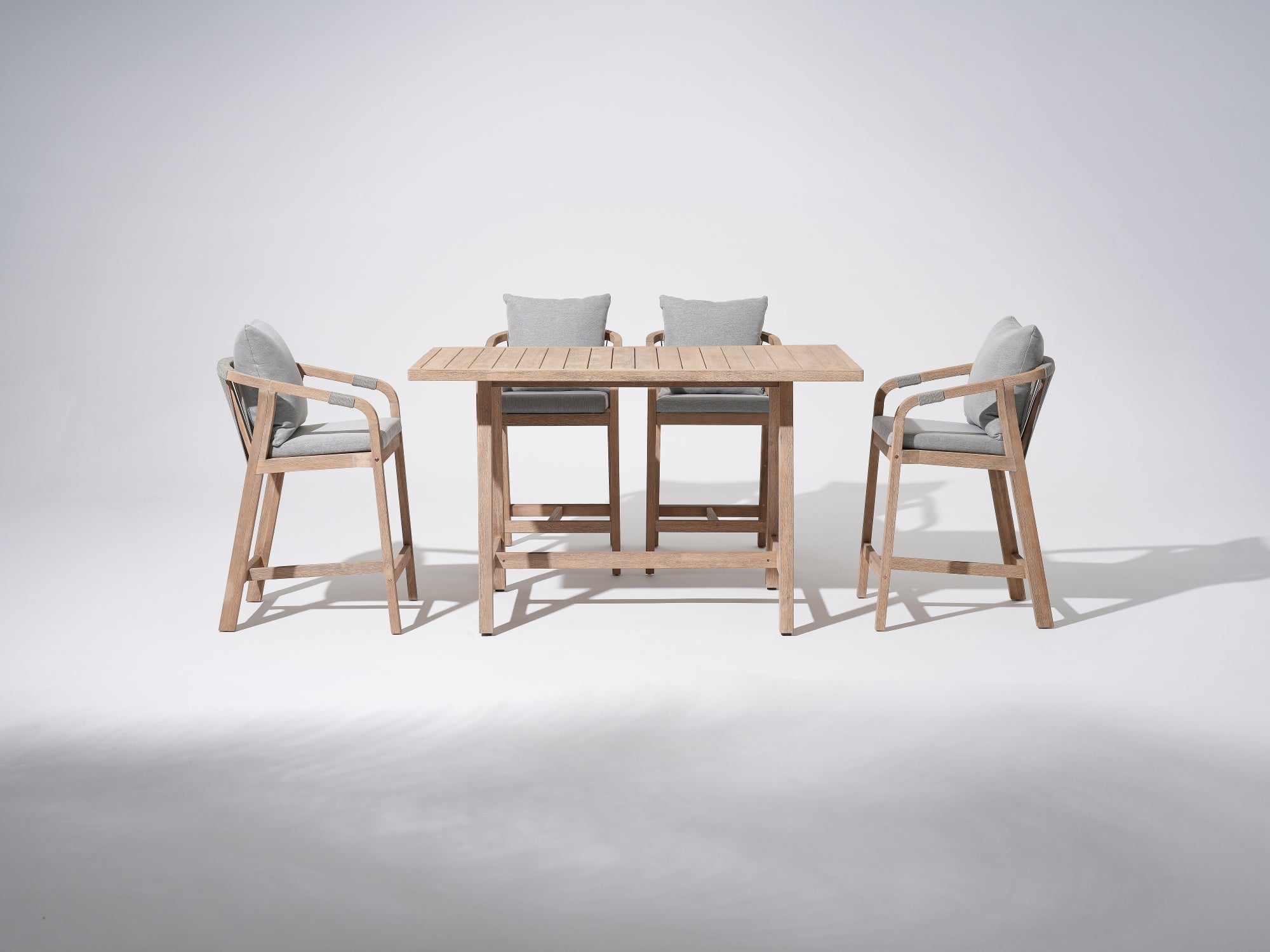In an era where sustainability takes center stage, eucalyptus outdoor furniture has risen to become a premier choice among eco-conscious consumers. This fast-growing tropical hardwood features striking grain patterns, impressive durability, and exceptional eco-friendly qualities. This article will delve into the multifaceted value of eucalyptus furniture—covering its natural characteristics, maintenance tips, eco-certifications, and design trends—to explore why it has emerged as an ideal option for outdoor living spaces. So, is eucalyptus wood a good fit for outdoor furniture?
1. The Biology and Benefits of Eucalyptus Wood
Native to Australia, eucalyptus trees (genus Eucalyptus) are now cultivated in tropical and subtropical regions worldwide. Their rapid growth rate (some species mature in just 5–7 years) makes them a model for sustainable timber. With a density of 0.65–0.85 g/cm³, eucalyptus is harder than pine but slightly lighter than teak, striking a perfect balance between strength and manageability.
Eucalyptus contains natural oils and tannins, giving it excellent resistance to rot and insects. Its heartwood ranges from warm honey tones to rich reddish-brown hues, weathering over time into an elegant silvery-gray patina—a natural aging process that enhances its rustic charm. Compared to premium hardwoods like teak, eucalyptus offers similar performance at a more affordable price, earning it the nickname "the people’s teak."
2. Eco-Certifications for Eucalyptus Outdoor Furniture
When selecting eucalyptus furniture, sustainability certifications are crucial. The Forest Stewardship Council (FSC) label ensures the wood comes from responsibly managed forests. Australia’s AGWAS (Australian Greenhouse Gas Abatement Scheme) certification evaluates the carbon sequestration potential of eucalyptus plantations.
Life Cycle Assessment (LCA) studies show that eucalyptus furniture has a 40–60% lower carbon footprint than metal or plastic alternatives. A mature eucalyptus tree absorbs about 2.5 tons of CO₂ per year, and the furniture continues to store carbon throughout its lifespan. In Brazil, eucalyptus plantations produce 25–40 cubic meters of wood per hectare annually—three to five times more than natural forests—reducing pressure on old-growth timber sources.
3. Craftsmanship and Design Innovations
Modern eucalyptus furniture blends traditional woodworking with cutting-edge techniques. Steam bending allows for fluid, curved designs, while advanced drying processes (typically 6–8 weeks) minimize warping and cracking.
Current design trends include:
- Minimalist lines vs. organic, free-form shapes
- Mixed-material designs (e.g., eucalyptus with powder-coated steel)
- Textured finishes that highlight the wood’s natural grain
Surface treatments have also evolved:
- Plant-based oil-wax hybrids penetrate deeper than traditional tung oil
- Micro-ceramic coatings enhance stain resistance while maintaining breathability
4. Performance Comparison: Eucalyptus vs. Other Outdoor Materials
Eucalyptus holds its own against popular outdoor materials:
✔ vs. Teak: 30–50% more affordable, similar hardness but slightly less oily
✔ vs. Metal: Warmer to the touch, 15–20°C cooler in direct sunlight
✔ vs. Plastic: 3–5x longer lifespan, fully biodegradable
✔ vs. Composite Wood: 100% natural, no VOC emissions from adhesives
Accelerated aging tests confirm that well-maintained eucalyptus furniture lasts 10–15 years outdoors, rivaling teak. Its bending strength (85–115 MPa) and compressive strength (45–55 MPa) make it highly durable for outdoor use.
5. Maintenance: Science and Practical Tips
Caring for eucalyptus furniture is about balance:
✅ First year: Apply protective oil quarterly
✅ Subsequent years: Oil 1–2 times annually
✅ Avoid: Silicone-based products (blocks wood pores), pressure washing (damages fibers)
Seasonal Care Guide:
- Spring: Inspect and reapply protective oil
- Summer: Clean monthly to remove dust and pollen
- Fall: Check and tighten joints
- Winter: Cover or store indoors (if possible)
6. Market Insights & Buying Guide
The global eucalyptus furniture market is growing at 8.2% annually, reaching $3.7 billion in 2023. Major producers include Brazil, South Africa, and Vietnam, while North America and Europe dominate consumption. Prices range from:
- $150–300 for a simple lounge chair
- $2,000–5,000 for high-end modular sofas
What to Look For:
✔ FSC or PEFC certification
✔ Solid joinery (dovetail, mortise-and-tenon)
✔ Transparent sourcing (brands should disclose origins)
✔ Warranty (5+ years indicates quality)
1) Jardina Eucalyptus Outdoor Dining Set For 8-10 People
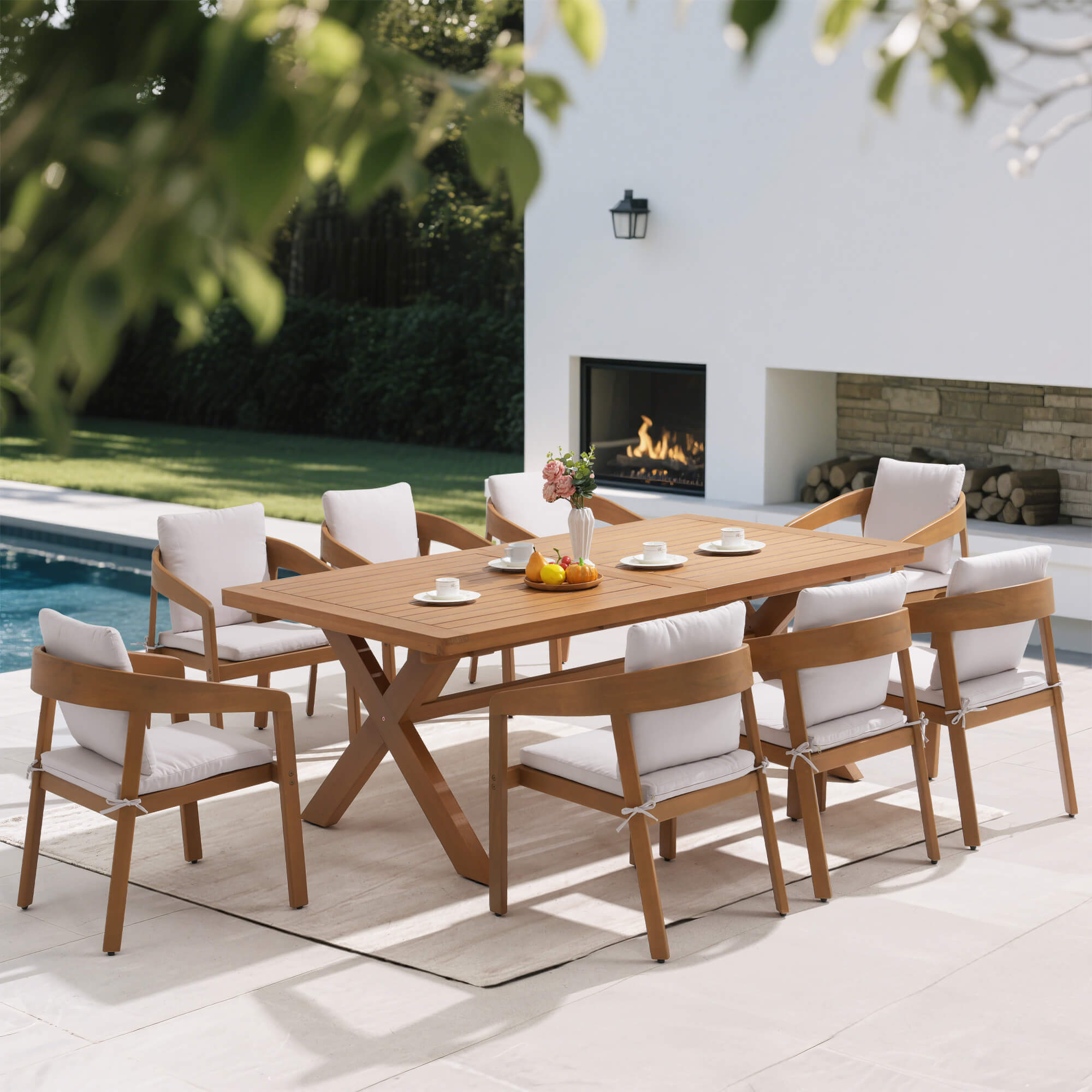
Crafted from premium eucalyptus wood, this dining set is designed to elevate outdoor gatherings with both style and functionality. The extendable table, with a length ranging from 78.7'' to 108.7'', effortlessly adapts to host 8-10 people, making it ideal for intimate dinners or larger parties.

The set includes 8 chairs with curved backrests and ergonomic armrests, ensuring comfort during long meals. Each chair features 2.3-inch thick cushions filled with 90% water-resistant foam and 10% fiber, upholstered in durable olefin fabric. For space-saving convenience, the chairs are stackable, keeping your outdoor area tidy when not in use.

With a sturdy eucalyptus wood frame, the set is built to withstand outdoor elements, promising long-term durability. Its warm wood tones and beige cushions blend seamlessly with various outdoor aesthetics, from modern patios to garden spaces. Priced at $2,800.00, it combines practicality and sophistication, turning every outdoor meal into a memorable occasion.
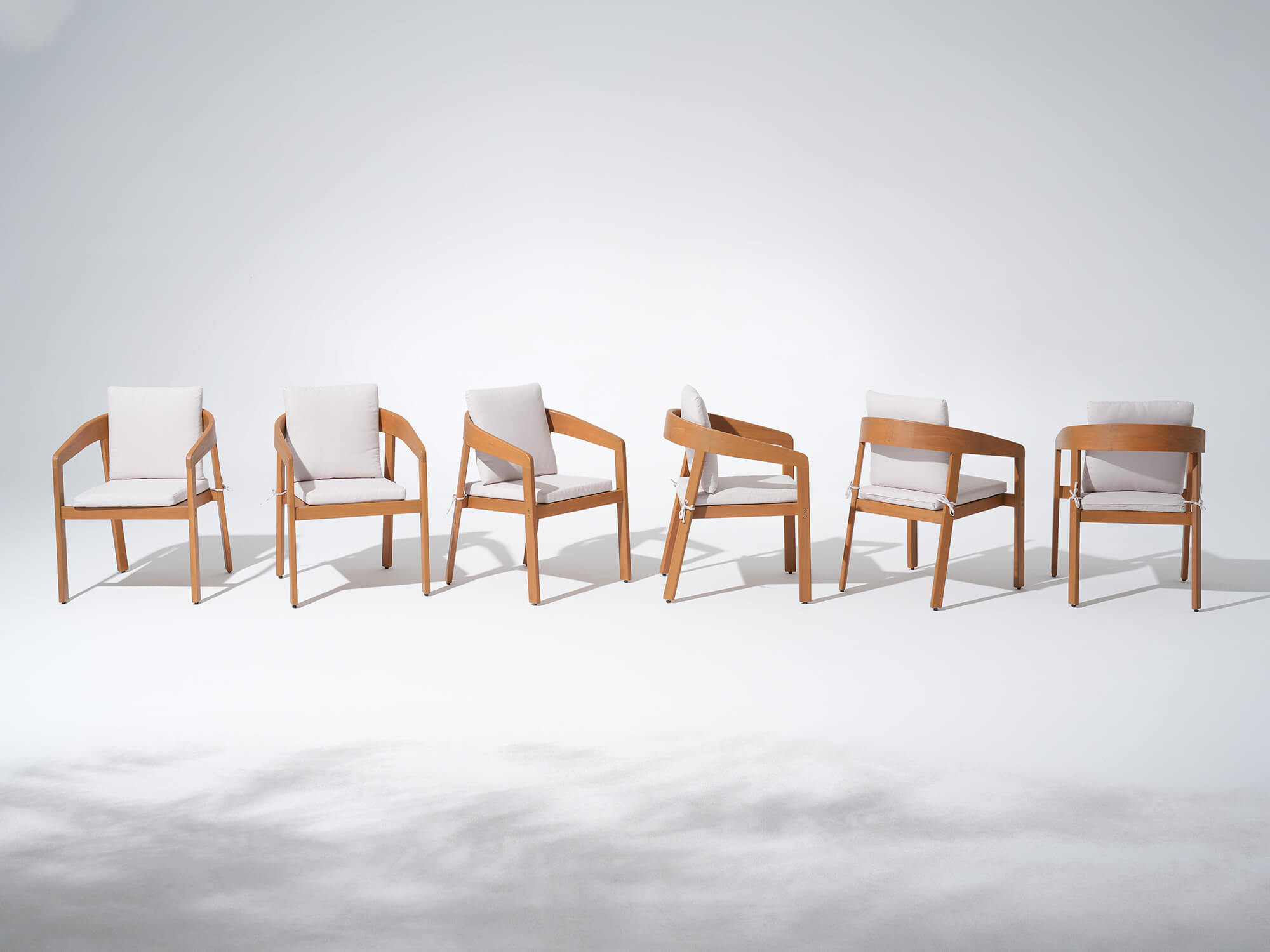
2) Jardina 4-Piece Eucalyptus Outdoor Sofa Set
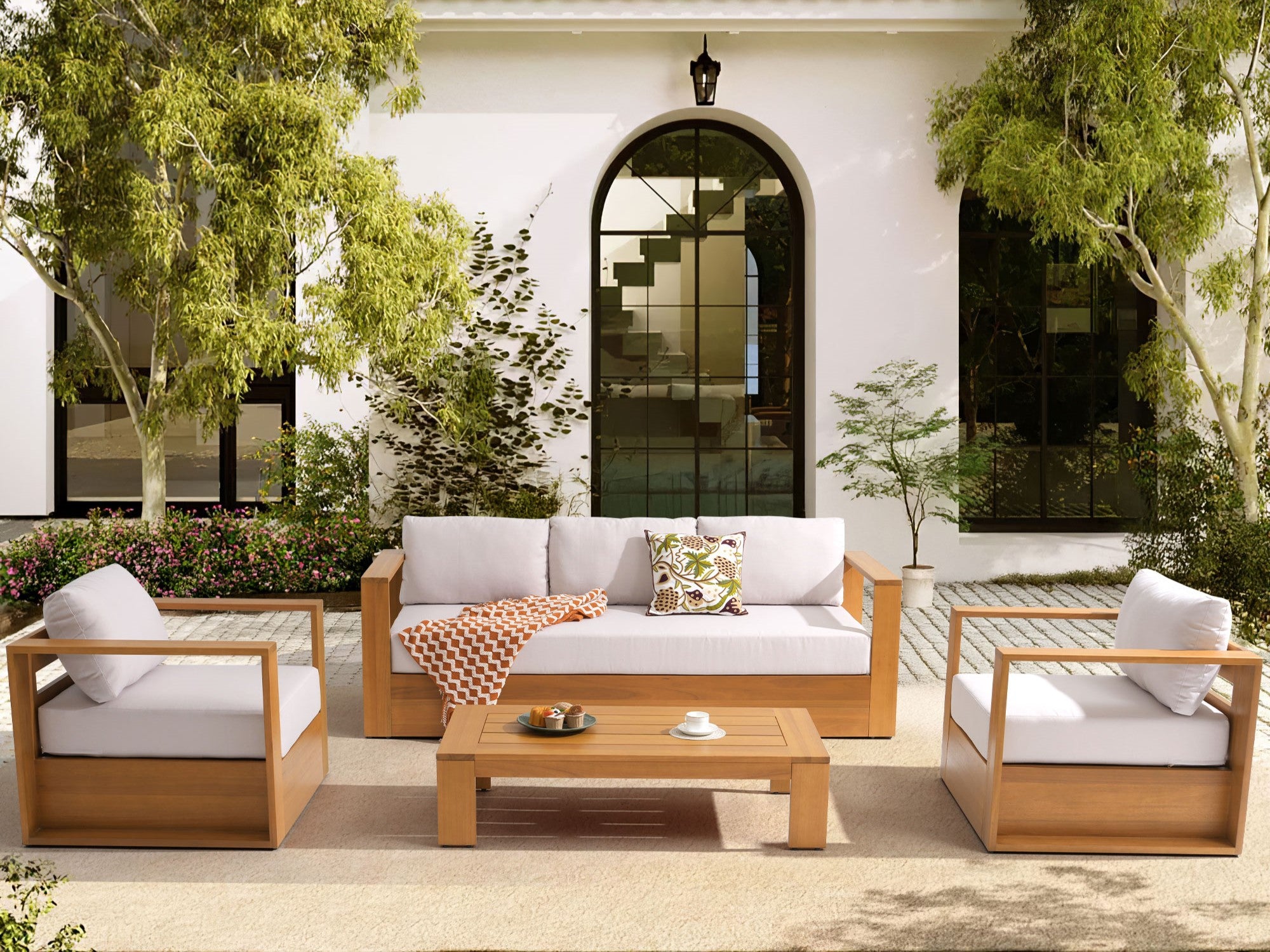
Eucalyptus outdoor furniture represents a philosophy—enjoying nature’s beauty while honoring environmental responsibility. Its rapid renewability makes it a powerful tool against climate change (each cubic meter stores ~0.9 tons of CO₂). When you choose a eucalyptus dining set, you’re not just buying furniture—you’re investing in carbon sequestration.
As technology advances, we may see even more innovations—from carbon-negative furniture to fully biodegradable designs. Eucalyptus reminds us that the best designs aren’t just functional; they’re a harmony between humanity and nature. In this sense, choosing eucalyptus is choosing a sustainable future.


